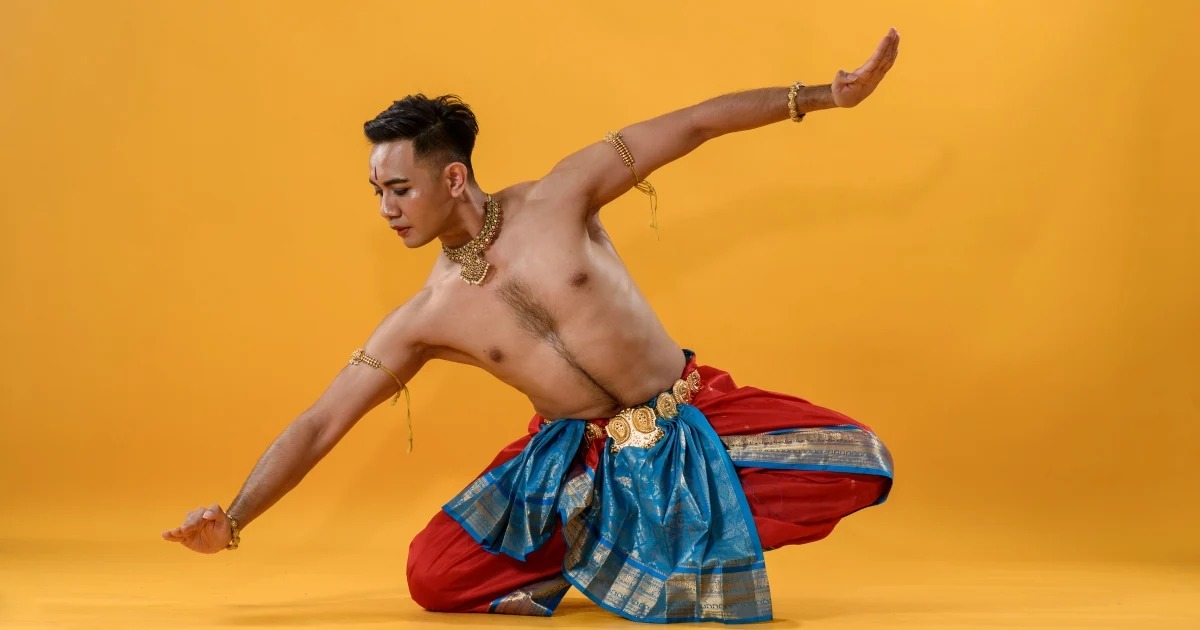Century after century, as the world is evolving, the culture of each civilization in history is recorded either in its music, artefacts, architecture, or other art forms. The rich cultural heritage of India has always been synonymous with its history of spirituality, art, and literature. Amongst the resplendent beauty of the diversity of the country, its mythology, and profound philosophy, the Indian dance forms hold a supreme position that gives the Indian culture a distinct identity. Starting as an ancient Indian classical dance form, Bharatnatyam was initially popularised in the South Indian temples where this dance form was believed to be a revered classical dance dedicated to the gods and the temple rituals. As per the historical records of the Natya Shastra, Lord Brahma is the real creator of Bharatnatyam and was known to dance for the first time before the sage Bharata who decided to include the art form in the Natya Shastra text. Bharatnatyam was initially the dance of the Devadasis and its inclusion as a temple ritual is still evident in many South Indian temples where the sculptures of gods and goddesses have been crafted in the different Bharatnatyam poses.
With the onset of British colonial rule, the once culturally significant Indian classical art form soon became a subject of disgrace as the Devdasis were considered to be doing something very shameful. Soon enough, the Bharatanatyam tradition was being compared to the dance forms of the courtesans followed by the implementation of a ban and the ultimate end of a culturally replete temple ritual. However, after a few years, classical art enthusiasts like E Krishna Iyer and Rukmini Devi Arundale together decided to establish the Madras Music Academy to save the dance form and within a very short time, the institute was full of students who were ready to carry forward the legacy of Bharatnatyam for the posterity.
India, being in itself a celebration of diversity, there are several folk dance forms representing the uniqueness of every state like Garba from Gujarat, Bhangra from Punjab, and so on. Bharatnatyam is deeply rooted in the cultural fabric of India and is synonymous with spiritual enlightenment and self-expression. With their distinct mudras and highly animated facial expressions, the Bharatnatyam dancers are known to render a narrative to every piece they perform. For every single aspect of narration, Bharatnatyam has unique expressions to emote feelings of joy, anger, hatred, or love. The three fundamental elements of Bharatnatyam are nritta, nritya, and natya, which represent the exquisite footwork and mastery over rhythm, coordination, and speed of the dancer, the mesmerising blend of expression with the dance movements and the storytelling aspects through emotions and mudras respectively.
That Bharatnatyam carries on the timeless legacy of Indian culture is evident in its unparalleled demand on global stages as well, where it is captivating international viewers with its charm and enigma. In the 21st century, Bharatnatyam is one of the representatives of Indian heritage on international modern platforms where it successfully blends tradition, timelessness, grace, and creativity on stage. It cannot be denied that Bharatnatyam has the power to unite the entire world as people across generations and cultures never fail to applaud a performance forgetting all about their origin and geographical diversity. The journey of Bharatnatyam is inspiring enough because it has been able to extract the essence of Hindu mythology and spiritual narratives from India and present them on stages in and outside India as well. What was believed to be a medium to connect with the god through the dancer and express devotion, is now an art form that is celebrated all across the world.
What makes Bharatnatyam’s cultural significance more noteworthy is its resilience and endurance against so much adversity. As it started as a holy and sacred temple ritual to worship the gods, over the years it has survived colonial invasion, the maligning of its glory, and the metamorphosis of the entire country into a modern land. Despite so much aggression, Bharatnatyam’s glory did not diminish even a bit as it continued to traverse centuries after centuries from temples to the global stage of the modern world. From the perspective of narrative storytelling, Bharatnatyam is more than just a classical dance form with evocative expressions and extraordinary footwork. Rather it is a meditative art that provides a platform for social commentary at the same time. Besides, the dance recitals exclusively deal with mythological themes and explore different social themes as well, where the dancers use hand movements, footwork, and expressions to create a narrative, aimed to raise awareness about any social issue.
That is why, the appeal of Bharatnatyam is continuously transcending the national boundaries and showcasing its beauty and artistic glory universally for the global audience as well. It is quite obvious, especially for the enthusiasts who wish to visit the magical portal that can take them back in time to ancient India when the different classical Indian dance forms had first started only to be surprised at how a dance form like Bharatnatyam has emerged as a dynamic force amidst all obstacles, aiming straight for a universal representation. It means that, in spite of being a relic of India’s rich cultural past, Bharatnatyam has become intrinsically connected with the present and future of Indian culture as well. Being a testament to the power and resilience that Indian culture has over any other invading force, Bharatnatyam will continue to shine as a radiant jewel representing Indian culture all across the world.
Keep an eye for more news & updates on Latest Dash!

